Apple Watch Ultra First Impressions
Last week we published two Apple Watch reviews. The second-generation 8 Series and SE scored highly in the flagship and budget categories, respectively. If Apple had stuck with these two products, it's easy to imagine that the company would have gained about a third of the smartwatch market share it currently controls.
However, after several years of relative stagnation, the class seems poised for a shock, with No. 2 Samsung (which currently controls about 10% of the market) re-adopting WearOS in an attempt to expand its presence. Just a few weeks after Google's long-awaited entry into the category with the launch of the Pixel Watch, prompted in part by the acquisition of Fitbit.
As these companies zigzagged, Apple faltered.
Earlier this month, the company added another major SKU to its Watch lineup. The Apple Watch Ultra was announced alongside the Series 8 and SE, and it wasn't long before the veils of these products - and the iPhone for that matter - became the most talked about devices at Cupertino's Far Out event. When it comes to smartwatches, it seems that Apple is looking for another company altogether.
Well, Garmin. It has been very successful in this category for many years. But when you know, you know.
The device maker has made a rare turn in consumer electronics. As the adoption of stand-alone GPS systems was completely stopped by the iPhone and its ilk, Garmin entered the field of sports fitness trackers. Back to this market research, it recently ranked fifth in shipments (after China's Huawei and Xiaomi) and third in revenue.
You can earn much higher commissions for these highly specialized products. For example, the Apple Watch Ultra starts at $799. That's $400 more than the entry-level 8 Series, doubling the price. This is one of the many reasons why the product is poised to become a niche device, as opposed to the more mainstream approach of standard watches.
Another is the sheer size of the product. The 49mm diameter case is much larger than the larger (45mm) Series 8. As you can see from our photos, it doesn't fit all wrists.
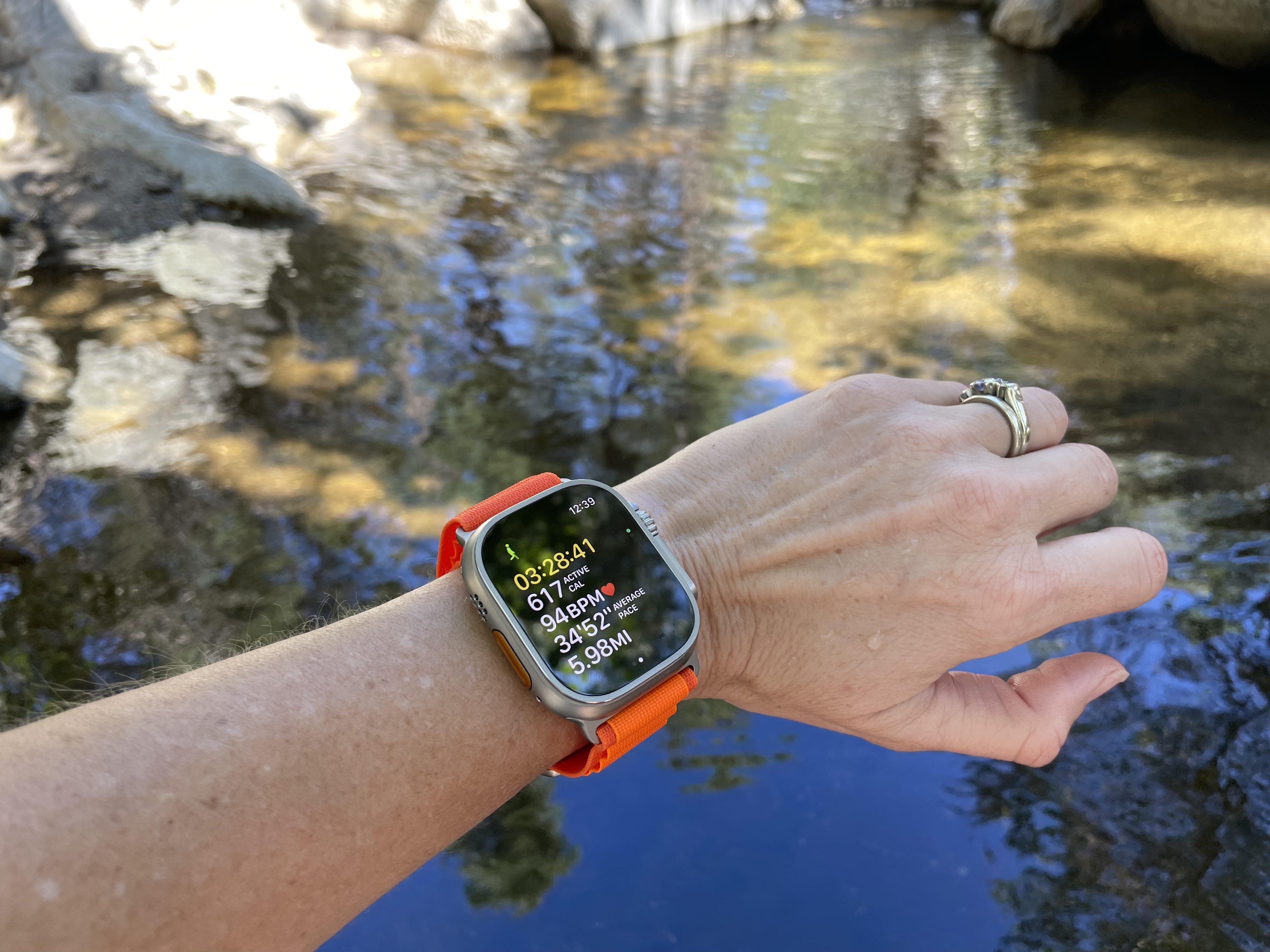
Image credits: Kirsten Karasek
So how much attention should Garmin give the Ultra? Apple, of course, is not the first manufacturer to ascend the throne of street smart watches. Samsung, for example, has entered this category over the years with varying degrees of success.
Meanwhile, Apple offers an experience. The company managed to create a smart watch from a hardware and software point of view.
With watchOS 9 as its foundation, Ultra believes that Apple builds solid hardware for great smartwatches, not the other way around. Of course, it's easy to see that the product was created by a team of active people involved in triathlons and the like. (And based on many of these features, yes, Apple engineers, we can say you're a triple player, or at least some of you are.)
So it's more than just a bigger and sturdier watch with new built-in apps. But could this whole package be something that hikers, climbers, and other extreme athletes should feel comfortable ditching Garmin for?
The Apple Watch has great looks and a ton of features, but we're not quite ready to declare the death of Garmin's trusty watch division just yet. And not only for the price.
We know we'll have to do a lot of real-world testing (plus some builds) to really answer the question. We will have this product on the wrist of a Hajji Certified Dive Instructor later this year when these features become available. While not touching the product, I will share some initial thoughts. Primarily for the pilgrim? The pricing model of the Oceanic app allows the user to unlock daily, weekly or monthly diving assignments for less than one hour of rental. Expensive for a smartwatch and cheap for a dive watch.
He noted that this is an interesting event. Stay tuned for a full dive review coming soon.
In the meantime, we (Gear editor Brian Heather and Transportation editor Kirsten Korosek) have been testing the Ultra, including outdoor adventures and other sports, and are ready to share some of those experiences.
After
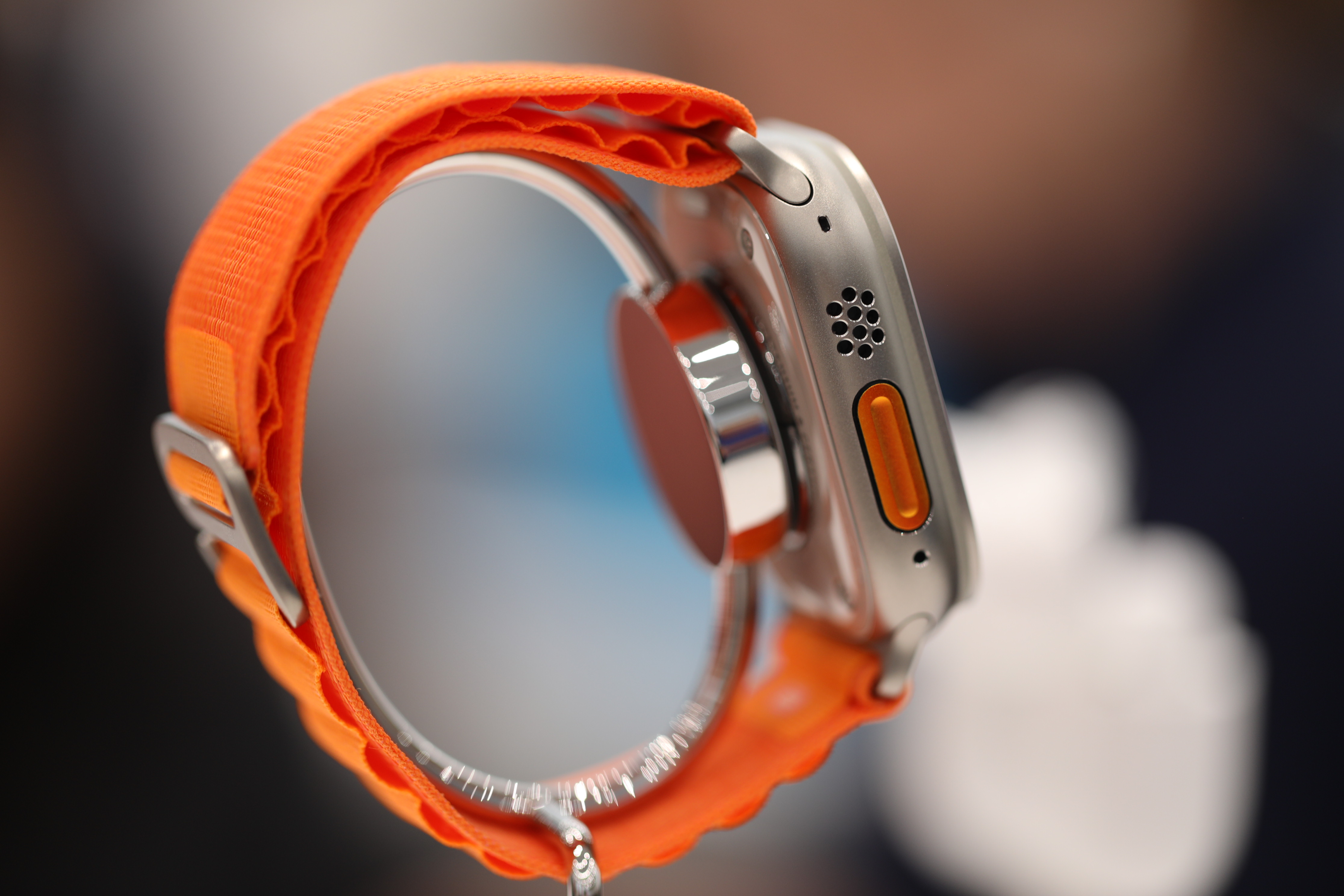
Image credits: Brian Heeter
Apple Watch Ultra promises more . It's right in the title. no more battery. More possibilities. Greater volume. More durability. just more.
Much of this is the "extra" sought by athletes such as ultramarathoners, triathletes, climbers, hikers, climbers and divers. But for all these people, bigger is not always the most important thing. As with any smartwatch, functionality and ease of use are key. The sleek appearance is primarily a bonus.
The good news is that Apple offers many features, but not all. There's a big gap in refresh rates, an important area Apple needs to be able to break into if it wants to attract data-obsessed athletes. For most potential Apple Watch Ultra buyers, that doesn't matter. But those training for ultramarathons, marathons, and triathlons need rest and recovery tracking, as well as sleep metrics. And there are tons of hardware manufacturers like Garmin, Oura Ring, and apps like Strava that can help.
The variable speed digital dials and three new dedicated bands are bright and eye-catching. But where Apple stands out in the Ultra is its understanding of how most (but not all) athletes use the watch.
Of course, the attraction for runners is clear: the climb is not very steep. Climbing, maybe. But outdoor climbing (especially when you're trying to tackle cracks and bumps) – and often requires holding your hands – doesn't make much sense for a device this size, even if it's made of titanium. But hey, watching the climbers isn't that important right now.
Measurement
Very large size. Like, really cool. It will be too big for some users, period. However, if one of our wrists measures 15 cm (circumference), it appears smaller and lighter than it appears. The watch with a strap on the Alpine buckle proved to be comfortable for almost seven hours of hiking in the fresh air, behind the laptop or during a tennis match.
Apple's standard rectangular design (as opposed to the round edges of others) ensures that the keys, dials, or dials don't dig into your wrist while you're active. For example, a watch does not interfere with hitting forwards or backhands in tennis. We wonder, despite the obvious athletic aesthetic in their work, how Ironman competitors will handle those grueling hours trying to rip off a suit while trying to jump into a bike race.
While the rectangular design isn't new to Apple, the shape has become more prominent as the watch has grown. The only thing we didn't check was the quality of your sleep during this time. Stay tuned for our backpack review because this suction cup will last forever.
While the case is a lot bigger than other Apple watches, the actual screen size isn't that big. It's larger than the Series 8 (making it the largest Apple Watch ever, the company notes), and the standard curved glass has been replaced with a more durable flat screen from Sapphire. It's also the brightest Apple Watch ever, with 2,000 nits compared to the Series 8 and 1,000 nits on the SE without significantly compromising battery life.
Action Button - Yes!
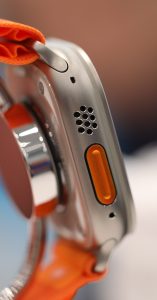
Image credits: Brian Heeter
Even before mounting the Ultra for a 10.7-mile hike, 2,850-foot off-road paddle, rock climbing (scratch), and even tennis, the action button felt like an instant upgrade that's a must-have feature. For any runner, athlete or anyone involved in sports where you may be in constant motion or wearing gloves.
Mountaineers and skiers will discover the significance of the large orange movement button on the left side of the watch. Sure, many new gloves come with smartphone-approved finger pads, but they're often uncomfortable to use. Active users need a big bright button that can be pressed with one action. Having used it on the Ultra, it's easy to imagine this feature becoming standard across watches in the future.
However, there is still a learning curve. The button can be customized to suit the user's taste, and while the customization is great, it's more complicated. Click on the new large crown and click Settings. From there you will see an action button. Click it to set a function including: workout, stopwatch, set a compass waypoint, go back, dive, turn on the flashlight, or create another shortcut.
We trained. From there, the button can be further customized for a specific action. For example, runners can choose to run outside. A promise made based on an action is real if the user has previously configured the button.
There was some confusion when using the Action button, which may be helpful to others. In this case, the big orange button is pressed at the beginning of the exercise. Click "Mark [Edit] Clip" again instead of pausing the workout. To do this, the user must simultaneously press the orange action button in the lower left corner of the watch and the digital crown. This is a simple step that bypasses the touch screen.
Section sorting is great for runners, but in feature updates we'd like to change the extra action for the action button. Another available feature to look out for is the siren. By pressing and holding the action button and the silver side button for a few seconds, the user will hear a tactile beep and then see "siren", "compass return" and "SOS".
Its designers may have envisioned SOS and Siren as a backcountry feature. It's loud (but not shrill outside) and tuned to a frequency designed for long-distance listening. But as travelers can attest, quick access to these two features is also important for jogging or exploring the city.
Battery life
Another previously mentioned "plus" is the battery life. This feature has long been an albatross around the Apple Watch's neck, especially as the company expands into sleep tracking. The Ultra has a battery life of 36 hours, double that of the Series 8. The numbers are further improved with a new power saving mode and other futuristic features. (See the Series 8 review for more information on Low Power Mode.)
Much of the battery improvement is a direct result of the much larger body, as well as the downsizing of some internal components, such as the touch engine. The math is simple: more internal volume = more room for the battery. For its part, Garmin defiantly responded to the Ultra announcement, noting, “We measure battery life in months, not hours.
During our outdoor adventures, we took the watch off the charger at 7am and the battery was fully charged. The action button is activated to start the workout at 8:30 PM PT. For battery life testing purposes, the workout tracker was left untracked for 6 hours and 43 minutes. After completing the training, ie. 10.7 miles on and off trail (the slowest part of the rock paddling), we kept the watch on our wrist just not actively tracking the workout. GPS and other activities remained active. The battery lasted a total of 36.5 hours, including exercise tracking and other uses. So, mission accomplished.
compass and back
One feature that's getting more attention on TechCrunch is the compass and back.
On our 17.7 mile nature trip, we implemented a compass feature to check waypoints and a return feature. During this initial test, the compass had calibration problems. As you can see in the image below, the compass is trying to rotate but it is not happening.
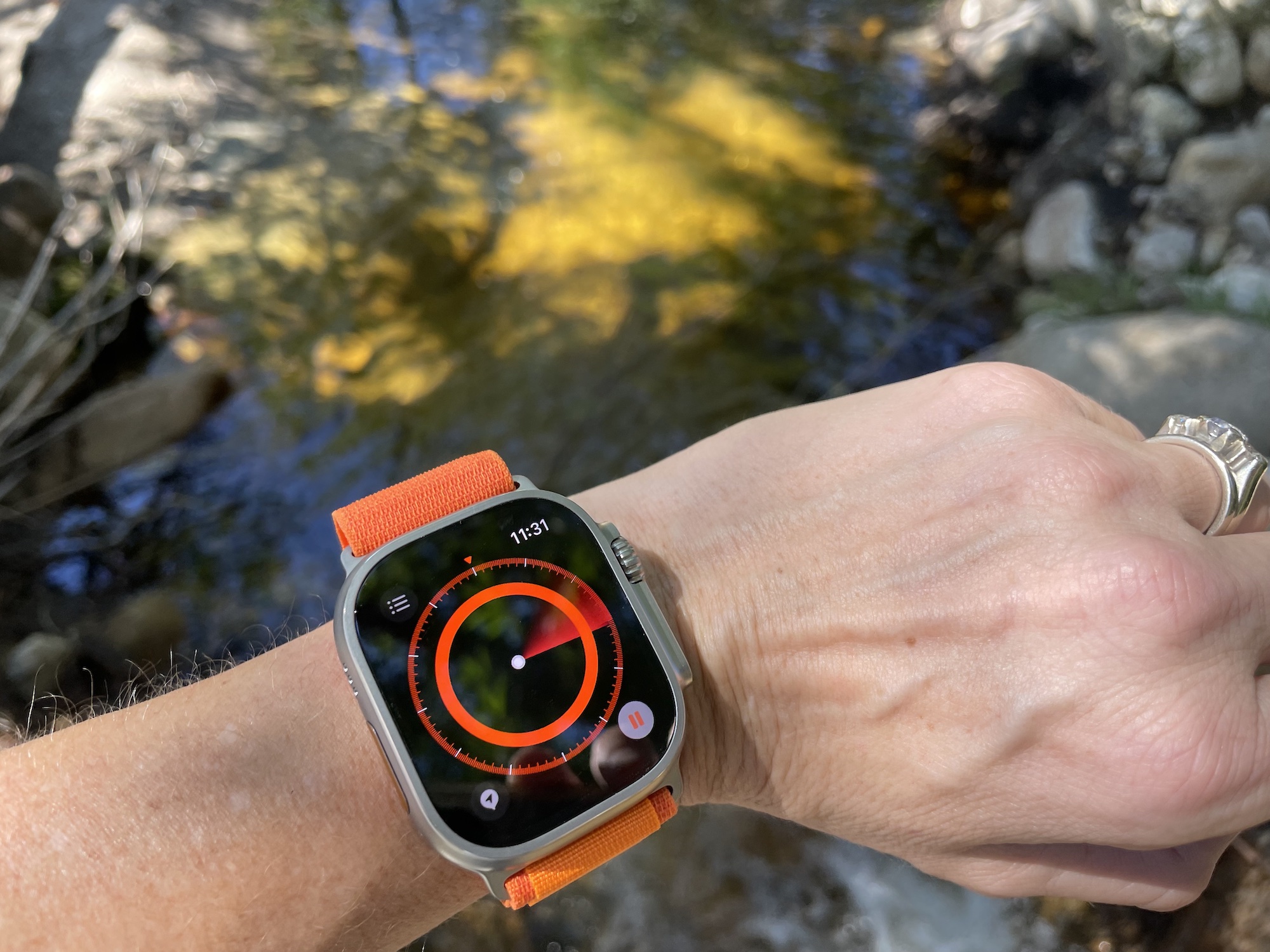
Image credits: Kirsten Karasek
On the second and third tests, the compass opened immediately and the feature worked as advertised. Our interest in the compass is actually related to the return function and waypoints. This is a feature that only a small percentage of customers will use, but we wanted to see how it works, because if you need it, you really need it.
In our outdoor tests, with no cell coverage, the watch was set to display the coordinates function on the watch face. Altitude, activity level and compass directions were also displayed on the face. Clicking on the indicator will open the compass itself. Then the choice is yours.
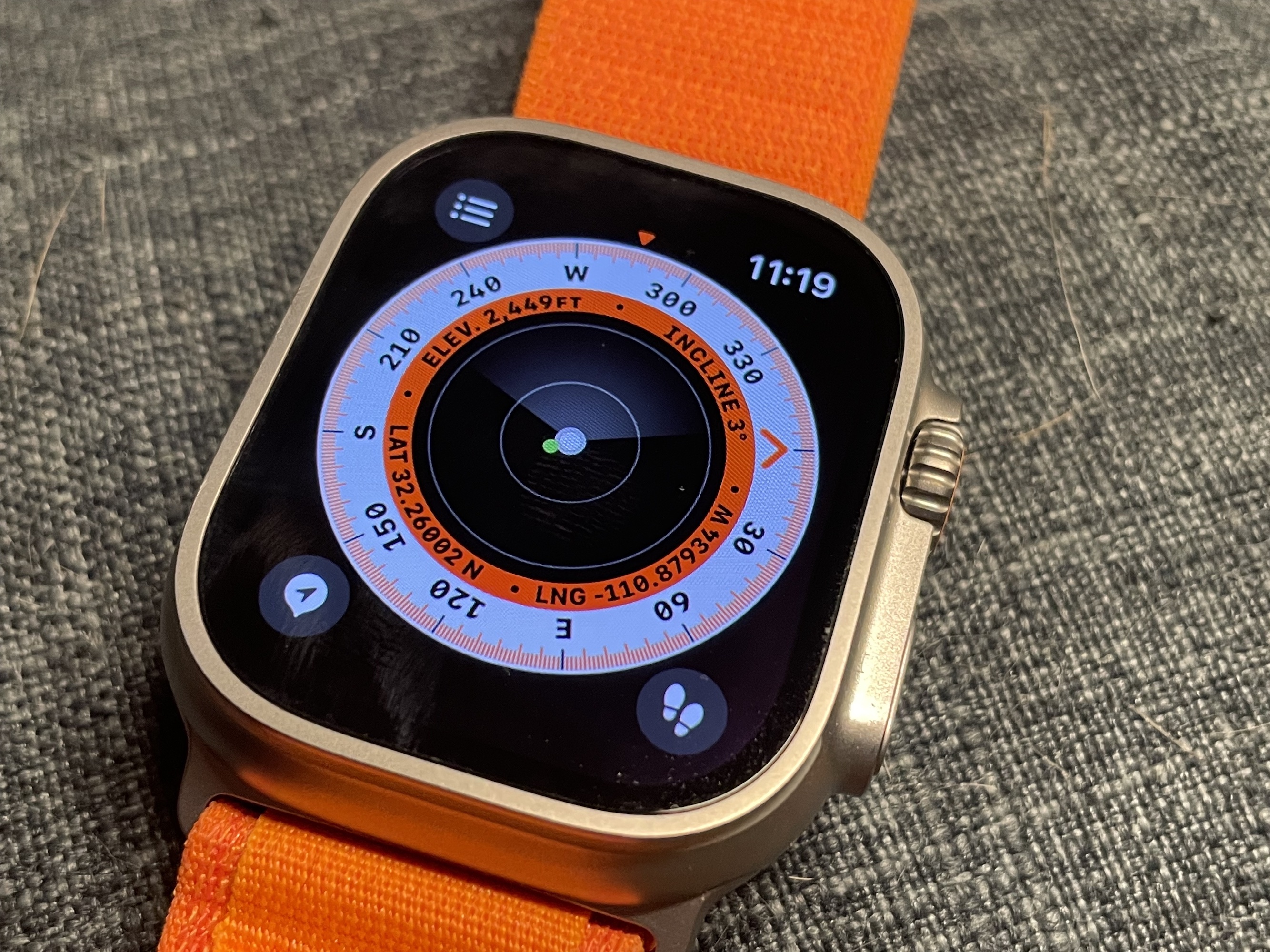
Image credits: Kirsten Karasek
Most users will always be on the specified path. But for the few people on the move like us, you can skip the coordinates and then hit the back button to find your way back to your driveway, your car, or wherever there's an OK, I know where we are." now".
Users can click on the waypoint icon in the lower left corner of the compass app as shown above. In the second and third tests, we decided to ignore the coordinates when running and walking. After clicking on a waypoint, the configuration screen appears. You don't need to go any further, but some may want to check out this particular navigation element. Maybe it's a crossroads or some other valuable place. Either way, you can click on the tag and name it. You can then turn the Digital Crown and select a color. From here you get a selection of icons like House and Tent.
Waypoints exist forever (unless you manually delete them later), which means that if you want to find a waypoint marked as Great View, you can always go back and find it.
The return function is what makes the coordinate function shine. Those little pins in the lower right corner will help you plot an exact path to the various waypoints you've left.
For tourists who are on the sidelines, this can be useful. But again, this will be a very cool, rarely used feature that some users will love and some will ignore.
Ultimately, the Ultra will appeal to many (like a sneaker you plan to wear every day) and be practical for athletes who can use this utility on outdoor adventures. The design is intuitive and surpasses other fitness watches in terms of user interface, streaming and connectivity. It is sporty and has enough battery to attract a lot of customers. But some features are missing, such as recovery metrics and offline topographic maps, for those who are really serious about their training or outdoor adventures.
Stay tuned for future updates from Apple and us. One of the advantages of the smartwatch model is the ability to continuously add features throughout the lifetime of the device. We know for a fact that there are a few features on the horizon, including an extra battery and underwater features, and we (well, one of us) are excited to try them out. Other features will also be coming in the future, such as the ability to automatically detect when you're on an open route (in the US, for starters) using Apple Maps data.
There's a lot to love here. It won't completely replace the trusty Garmin for all outdoor enthusiasts, but at the end of the day the Ultra is a lot more than just an Apple Watch wrapped in a rugged case.

Post a Comment for "Apple Watch Ultra First Impressions"